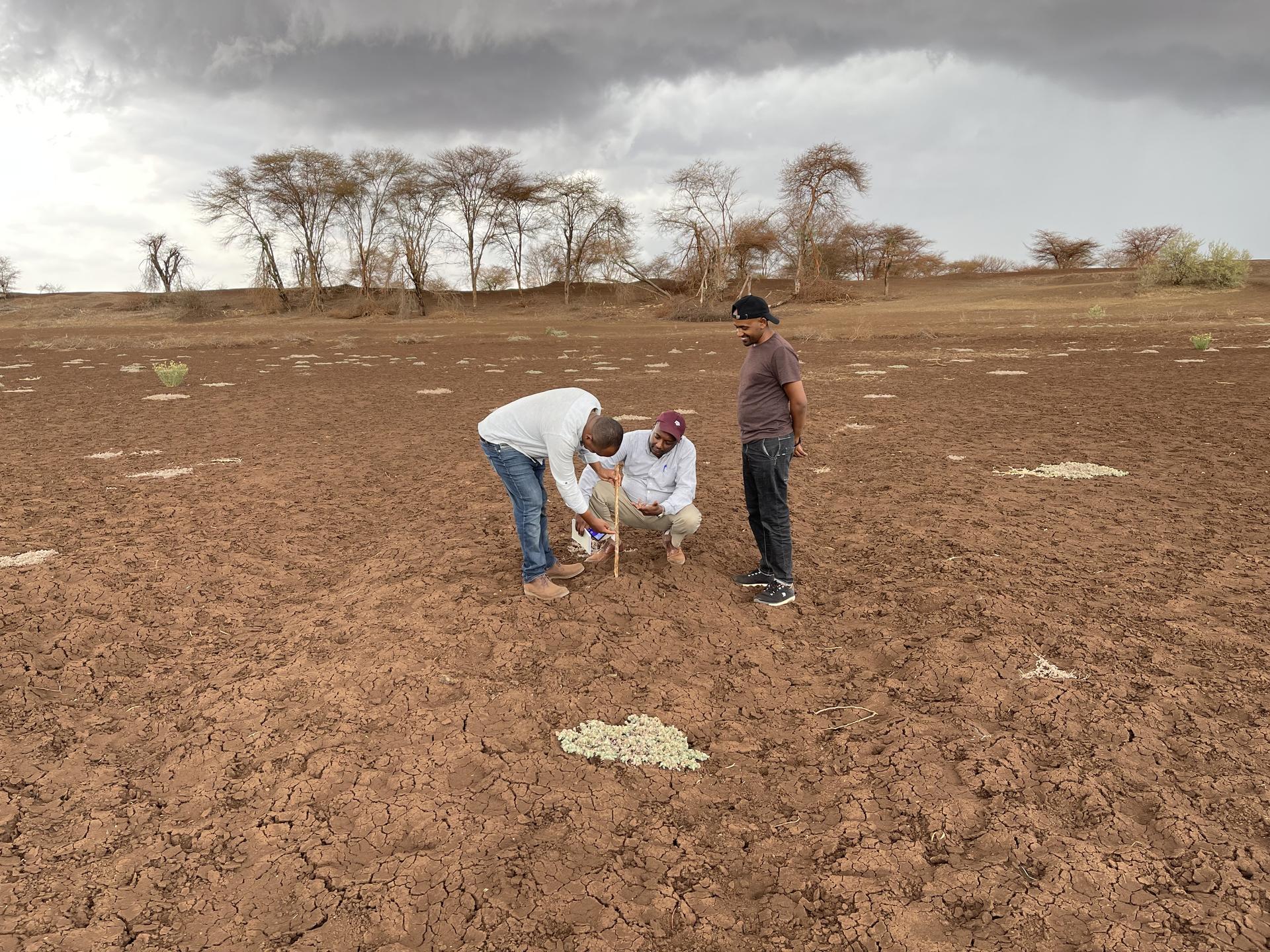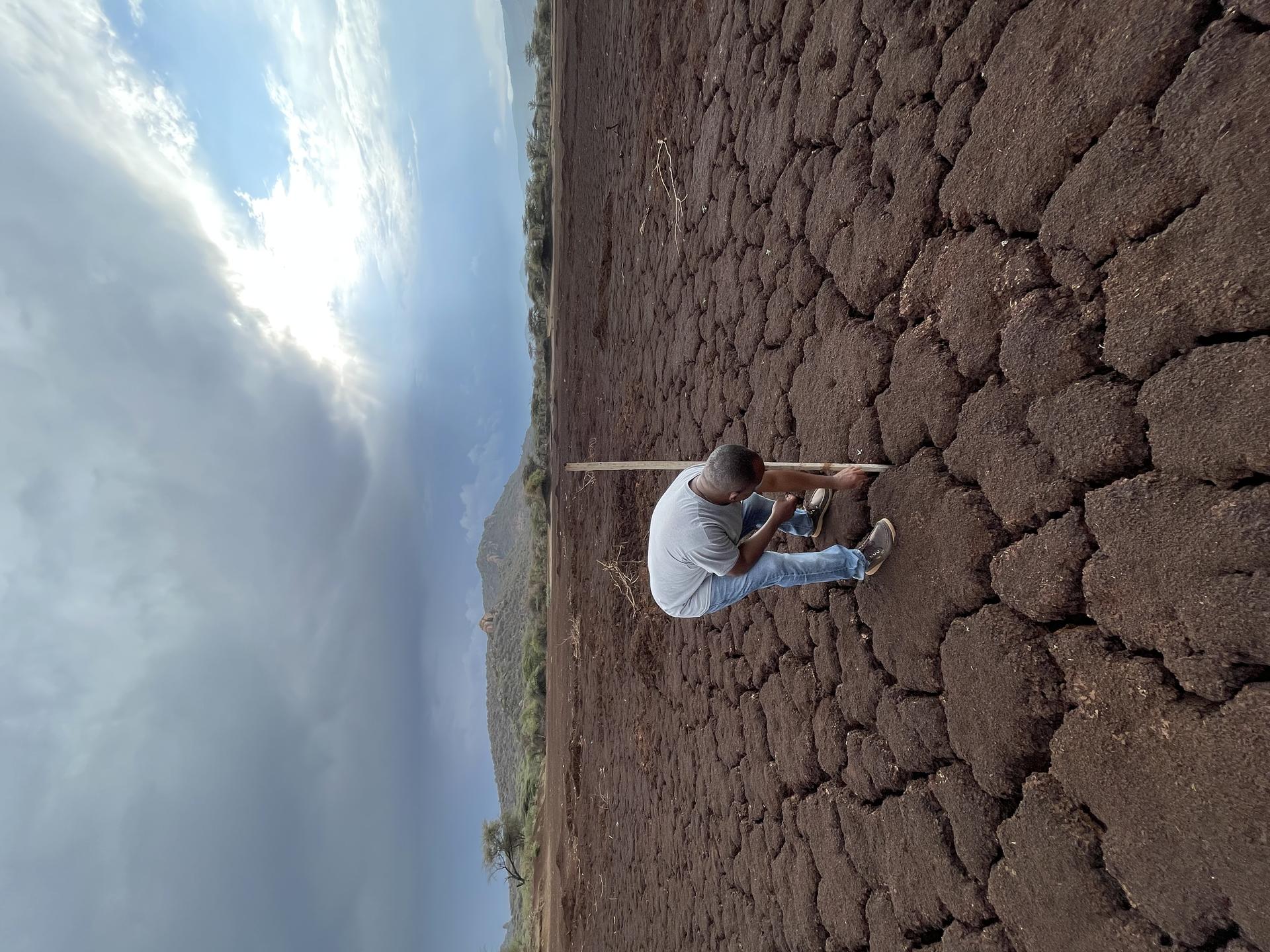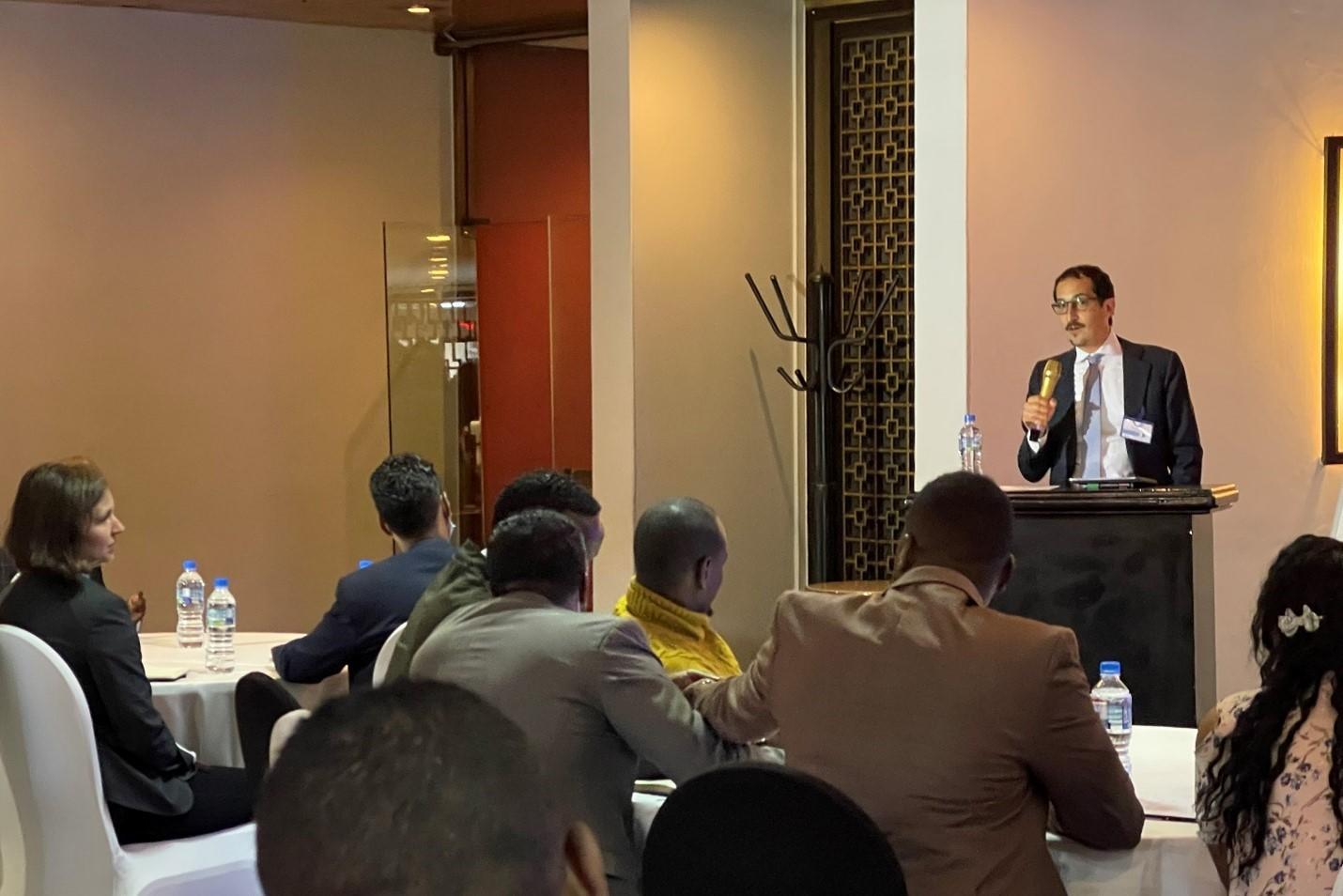Blog A real-time livestock water source monitoring and risk management system project in Ethiopia

By Sintayehu Alemayehu
The livestock sector contributes about 36% to the Ethiopian agricultural GDP and accounts for about 15% of export earnings in the country. Ethiopia has one of the largest livestock populations in Africa, estimated at about 35 million Tropical Livestock Units (TLUs). Thus, the development of the livestock sector is fundamental to supporting the country’s economic, and social development.
However, the drought situation is also accelerated by decades of human interference with nature leading to deteriorated natural ecological settings and never-seen proportions of water scarcity and shrinkage of water bodies to unimaginable volumes. This makes the basic survival of millions of pastoralists and their livestock extremely risky and high magnitudes of vulnerability to climate -triggered hazards are now the norm. Shrinking resources not only affect livestock production and livelihoods of pastoral communities but also triggers conflicts among different ethnic groups. Pastoral communities in the larger part of the country have limited or no access to timely early warning information particularly on waterhole water levels located across their districts. The absence of timely information has reduced the resilience of the pastoral community to cope with the recurrent drought. Thus, they instead rely on traditional knowledge to forecast weather and devise a coping mechanism for the existing climate change impacts. In addition, policymakers at the federal and regional levels still demand timely and reliable information to enhance their early warning response measures for planning and implementing key climate risk responses. Therefore, this is essential to establish a livestock early warning information system on the water surface in major livestock-producing pastoral areas to provide real-time and reliable information to address the major challenge facing the livestock sector.
Millions of pastoralists dependent on livestock, whose livelihood is extremely threatened due to food insecurity and chronic hunger. This project pilot through partnership with Oromia Agriculture Research Institute will focuses on Borena Zone which ranges from 461 to 2483m above mean sea level. The climate is largely semi-arid with relatively cool annual temperatures (19-24°C) and a mean annual rainfall ranging from 300 mm in the lowland up to 1000 mm in highland. The zone has one of the highest livestock or pastoralist population densities, and potential additional water locations from the Somali Regional State.

A water pond in the Borena zone showing the difference after rain in 24 hours - March 23rd before rain

A water pond in the Borena zone showing the difference after rain in 24 hours - March 24th after rain
A Real-Time Livestock water source monitoring and risk management system (LWSM) project comes at a crucial time when recurrent droughts currently affecting livestock and pastoralist communities in Ethiopia. The project is funded by the Bill and Melinda Gates Foundation (BMGF) and led by the Alliance of Bioversity International and CIAT in partnership with the Ministry of Agriculture (MoA) and the Ethiopian Agricultural Research Institute, along with other key national and local institutions. The United States Geological Survey (USGS) is also a key technical partner in the implementation of the project.
LWSM project aligns with the country’s agricultural strategy and agricultural investment plan objectives to address climate risks in drought-prone areas. Primarily, the project intends to develop an integrated platform that monitors livestock water availability on a near real-time basis using remote sensing and weather information. Secondly, build a simplified web-based decision-support tool for the dissemination of real-time information to livestock producers and other key stakeholders for proper and relevant risk management decision-making and drought planning. Third, design a scalable, holistic, and gender-sensitive capacity enhancement program to mitigate drought risks. Stakeholder engagement and capacity building is crucial components across the project cycle that involves conducting a need assessment of the community, engaging key stakeholder in project product test and validation, and conducting training to better understand and use the decision support tool among end users. The tool provides site-specific information on the relative depth, rainfall, and evaporation level of the water surface/waterhole. The information will be disseminated through different platforms including traditional knowledge.
The project was officially launched on 16th November at the Hilton Addis Ababa Hotel, Ethiopia. The participants were drawn from the government, development partners, Borean Zone community leaders, Civil Society Organizations (CSO), research institutions and academia, the private sector, and media.

The main objective of the workshop launch was to present the overview, objective, and expected outcomes of the project. to get insight into the structure of the project the stakeholders discussed the points below in length;
• Systematically improving the traditional methods of gathering and disseminating information on the availability of water resources.
• Integrating key components of remote sensing data for mapping and monitoring water conditions and supporting the local early warning system.
• Providing near real-time data regarding water conditions to enhance the ability to pinpoint areas of vulnerability to better protect livelihoods and timely decisions from the government.
• Contributing to food security issues related to livestock, conflict management, and providing important information for livelihood improvement efforts throughout Ethiopia.
• Scaling up the successful outcomes of the pilot projects to other locations in Ethiopia at a wider scale.
The workshop was officially opened with a brief opening remark by Dr. Diriba Geleti, Deputy Director General of the Ethiopian Institute of Agricultural Research (EIAR). Dr. Diriba emphasized that the project is a fit for the purpose of the livestock sector which is considerably suffering from the lack of quality and timely data and information on water resources availability.
Dr. Tess Russo, a Senior Program Officer, from Bill & Melinda Gates Foundation, also acknowledged the high interest of the foundation to invest in projects that support small-scale producers to adapt to climate change and this project is a good example of that. It will provide the practical use-case of using timely and reliable information to enhance the climate resiliency of livestock producers. She also emphasized every key stakeholder to be a leader in this project as it will not be pure research or innovation but rather a collaborative effort to develop and use a local decision-support system that can be a model case in the wider East African Region.

Dr. Tess Russo, the Bill and Melinda Gates Foundation

Dr. Evan Girvetz, Alliance of Bioversity and CIAT
Dr. Evan Girvetz, a principal Scientist, and project Advisor at Alliance- Bioversity CIAT, also reiterated the overall objective of the project which is to improve the provision of near real-time information on water sources in the drought-affected Borena Zone and harness scalable lessons for the CGIAR programs.
Sintayehu Alemayehu, Scientist at Alliance Bioversity-CIAT and project leader presented the project rationale and methodology. He indicated the project will also conduct water profiling in the area and document for future planning. Hence, the developed platform will enable the government and the community to reduce vulnerability to such severe drought risks in the dryland areas.

Sintayehu Alemayehu presentation the project background, objective and expected outcomes
The Borena pastoral community feels this is a timely invention, they have already many dry dams and pods. But this means they will be up to date with the status of the pods. The practice also of it also compliments their traditional community of practice of telling rainfall patterns. It will also lead to effective water management. The real time water management would mean the community is well prepared for extended drought periods which sometimes last up to three rain seasons.
Ms. Astenish Mikre a representative a women and youth affairs delegate at the Zonal Women Bureau, explains that due to lack of information families walk long distances to get water. This affects women and children mostly since women are responsible for domestic water and children for watering the livestock. At hand information will save the community long unnecessary trips. “We welcome this project with open arms, our women and youth, most especially the girls will get information beforehand. Saving us the unnecessary trips and leading to productivity in other economic areas.” She said.
Additionally, a group discussion took place in the workshop where the proceedings of this session defined the key challenges and opportunities the livestock water source monitoring use-cases would address, other existing systems for leveraging or expanding the adoption of the project, other regions to consider in scaling the project, and any other partners to be considered in implementing the project.
An interaction with different stakeholders on their perspective on the project and integration with the community
